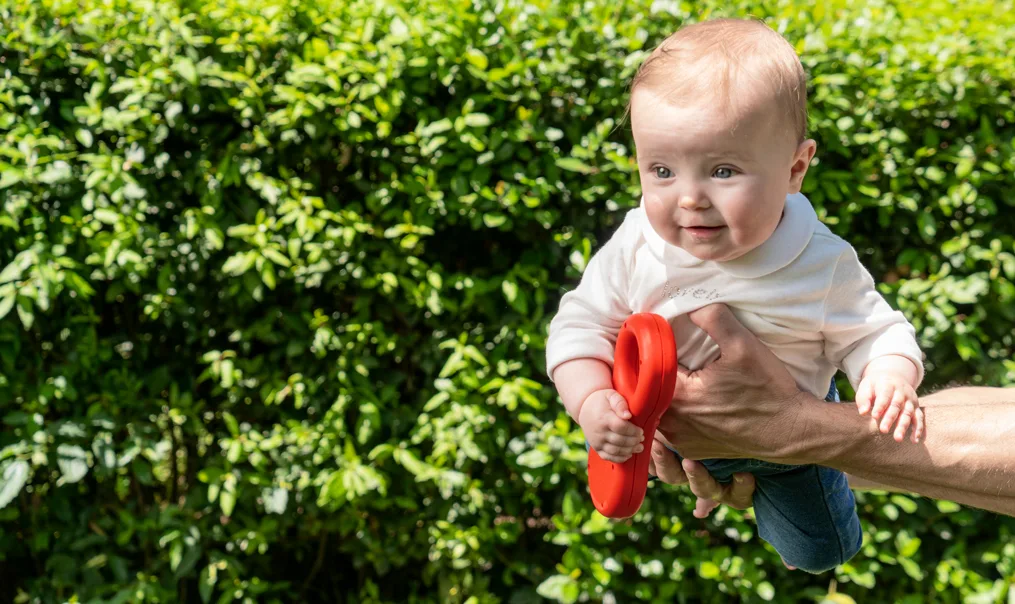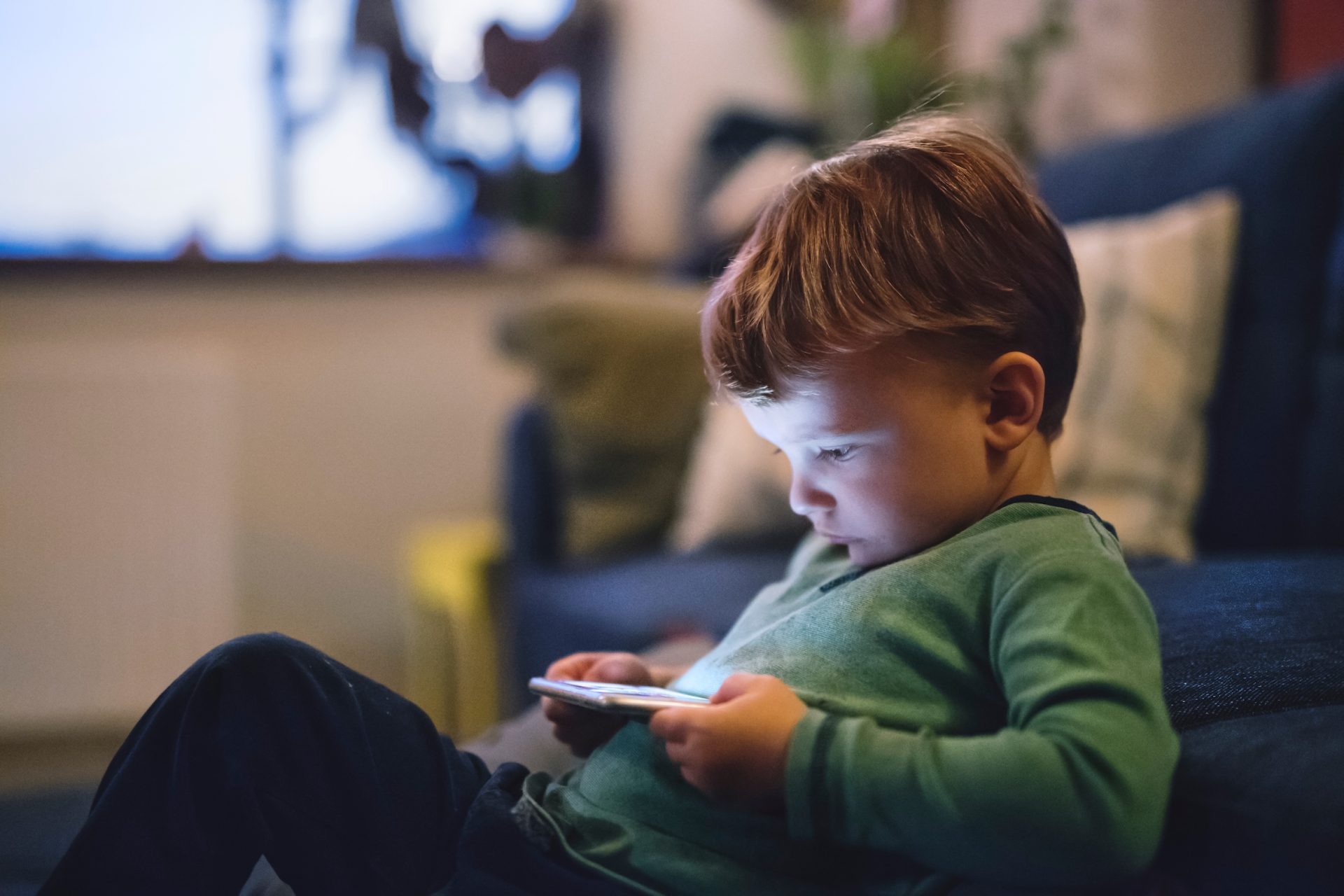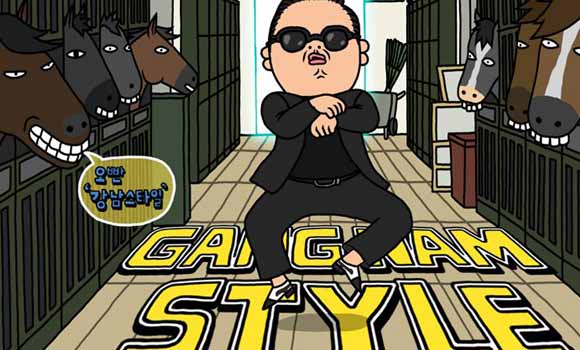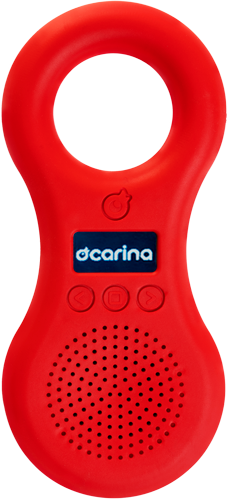From personal experience to a goal to share
Ocarina’s idea was born in the family. We were on the eve of a long trip with young children (1-3-5 years old) and among the things to pack were the fairy tales and music we always listened to in the car or on the stereo at home.
I didn’t want to know about sharing tablets or cell phones with them, adult devices that I felt should not enter children’s lives so early. Everything in its own time. I thought that listening for children was an extremely important thing, to be facilitated and stimulated in every way, possibly with an audio device specifically for early childhood.
So almost by chance was born what is still the vision and mission of the brand, and Ocarina took shape: a maximally portable and durable audio player that would allow listening anywhere, alone or with friends.
Everything was to be extremely user-friendly, with no need for headphones or connection or other external accessories that would make it binding and expensive to manage over time.
A single usb cable for charging and content management, and a large internal memory to be filled with favorite tracks.
l would later realize that Ocarina’s memory had also become a little piece of the family memory over time, a bit like a photo album.
The collection of all the audio that my children had listened to when they were little gave birth to a soundtrack made up of books, fairy tales, sounds of nature, readings that I myself used to record for them when I was away on business, which we still listen to again today with the same emotion of someone flipping through an album of memories.
Childhood audio has a long history
Someone to whom I told my idea said, “Great, it’s the children’s iPod!” Indeed, the iPod was in those days the ‘revolutionary’ portable listening device. It took the place of the portable CD player derived in turn from the legendary Walkman.
But they were adult products, surely unsuitable for preschoolers. In fact, the tradition of ‘portable audio devices’ is very old, one could say that it was born with music boxes that spread in so many cultures through the centuries and saw precisely in children the users of choice.
There were later novelties and innovations that always allowed greater quality of listening and contents, but the first great technological leap under the banner of ‘portability’ came in the 1960s with the portable 45 rpm record player. Iconic and wonderful devices such as the Penny, the Irradiette or the Pop 45 Minerva were born. Colorful, durable, portable and easy to use. Initially, young adults fell in love with them, but over the years they ended up in the hands of children, along with a flourishing of publishing products such as Fabbri audio fairy tales and all the legendary 70-80s cartoon soundtracks. It was a magical time for the childhood of many children, but it did not last long.
Technology applied to audio reproduction did not stop running, forgetting, however, once again, about children. For them arrived sound toys and the first Chinese productions.
The evolution of the project
The first idea of Ocarina had given centrality to free listening for children without compromising on autonomy and safety. Following an ecological and Montessori approach, we have always remained faithful to the original concept, a low-tech approach in which there is no need to take advantage of technological opportunities to increase interactivity.Using a sound toy can be a lot of fun but rather repetitive and mechanistic.
We did not want to lose the audio creative and imaginative role. You can play for hours while listening to Ocarina without focusing children’s attention on the device. We did not want to lose the audio creative function in favor of mechanistic interaction with the device.Instead, we worked on the adde
d value of our 360° proposal based on 4 pillars starting of course from the intrinsic qualities of the device: the design with the unmistakable 8 shape, the resistance and quality of materials, performance and functions; the after-sales services.
We declined the ecological commitment of the project also to its entire life cycle (made in Italy production, reparability, recyclability and reuse) that found fulfillment in the Ocarina (re)Player initiative. We have dedicated ourselves to the care of original audio productions that has led us to work with professionals (such as StoryNory, La Radio des Enfants, Vorleser..) and of collaborations with professionals and institutions in the field, such as Museums (The Guggenheim in Venice, the Triennale in Milan, the Musée du Quai Branly in Paris, etc. ); Hospitals (The Children’s Hospital in Toulouse, Robert Debré Children’s Hospital in Paris, Hôpital Necker-Enfants malades, Les Petites Fées Prema Auvergne Rhône-Alpes in Grenoble, etc.); Festivals (The Andersen Festival, Mantua Literature Festival, Yoga Festival in Milan, etc.).
Over the years, a rich ecosystem dedicated to the promotion of listening from early childhood has taken shape, at the center of which is now the Ocarina Player.
This has been possible because, from the beginning, we did not think of Ocarina as a toy, but as a real listening device for children inspired by the equivalent for adults, in which audio quality is central, and ergonomics, portability and durability are key functional elements to give maximum listening freedom.
Ocarina can be listened to in the cradle as in the car, in the stroller as on the bike, in the bedroom or outdoors, alone or in company.
Audio devices for children today and in the future
In recent years there has been a flourishing of products that make audio for children. We have been delighted with this veritable boom that audio for children has had, and the central role played by Ocarina in this success.
In countries such as France there has also been a rich growth of quality audio productions by large publishers and independent entities such as Bloom – La Radio des enfants with whom we have been collaborating for many years.
Some manufacturers have followed Ocarina on portability and the possibility of playing any audio, but most have focused on specific functions, and often limited to the reproduction of certain audio content.
Audio for children is finally a mature sector in central European countries such as France, Germany, and Switzerland, and in Italy, too, interest is growing.
Different approaches are enriching it and helping to bring more and more families closer to a conscious use of technology.
An increasing number of children have at their disposal specific listening devices that allow them to receive the right stimuli, growing up among music and fairy tales.
Ocarina continues its commitment and plans a series of important new features for each of its 4 cornerstones for 2023, to continue to be a reference in the wonderful world of children’s audio.








